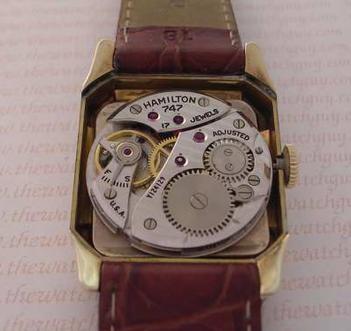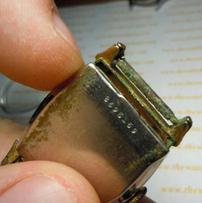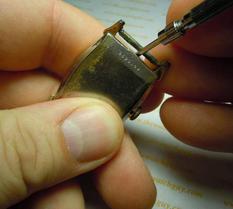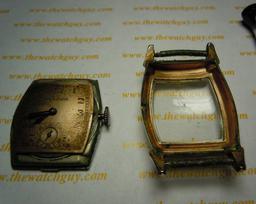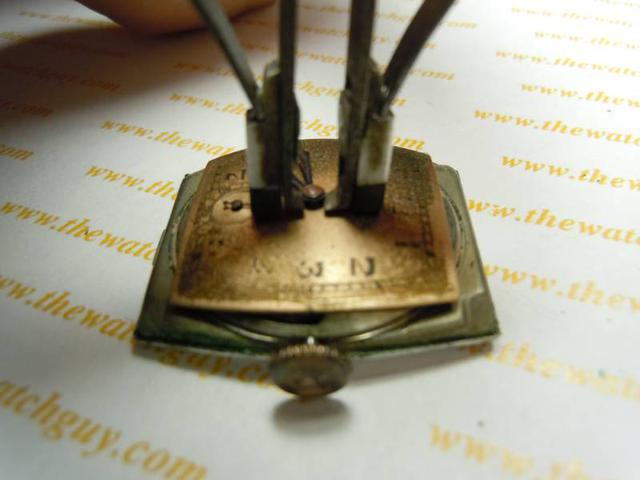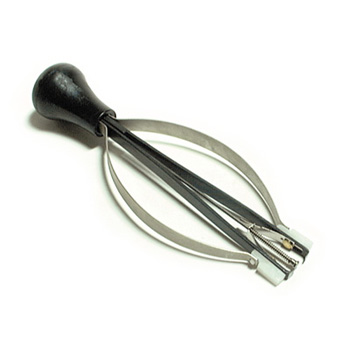How to Clean & Oil a Watch:
A Beginners Guide - Section 3
Written by: Kevin James
Copyright © Kevin James. All Rights Reserved.
Opening the Case and Removing the Movement
Taking the movement out of your open case can also be difficult. In some pocket watches you will need to remove the crown as decribed later in this section. On other pocketwatches the crown can not be removed, (there is no screw for removing the crown - as described later). In these watches you simply need to click out the crown to release the movement. See my section on "Opening Pocketwatch Cases" for more information...
Most pocket watches and some older wrist watches you will need to remove some case retaining screws in order to get the movement out. These screws (usually two screws) overlap the back edge of the case. Some of these screws have half of the head sheared off so that you only need to turn it partially to clear the lip of the case. Remove them (or turn them so the sheared part clears the case. The movement is removed DIAL SIDE... so you will need to remove the front (which is called the bezel... a thick ring that holds the crystal). These are either screwed in place or snapped in place. Once you have it removed, exposing the dial and hands, you must be very careful! There is nothing to hold the movement in, and it may fall out. Carefully lift the movement through where the crystal was, at an angle to clear the winding stem, and out of the case.
Wrist watch scenarios
Removing the movement from a wrist watch is sometimes easier, sometimes harder. Most older wrist watch movements sat inside the back cover. When you take the back off, the movement goes with it and you will find yourself looking at the dial and hands. Now it is just a matter of lifting it out of the back. Others also have screws that will hold it into the bezel. On these, when you remove the back cover, and the watch doesn't come out with it, nor can it be removed easily, look for tiny screws and retainer clips that hold the movement in tight to the bezel and remove them.
Other wrist watches and some pocketwatches will have the stem and crown that go through the side of the case making it impossible to remove the movement without first removing the crown and stem. To remove the crown and stem, look for a tiny screw on the movement (shown with red arrow in adjacent picture) This screw "locks" the stem in place. Unscrew it a few turns and pull the crown. It should slide out. (Hint: Reinstall the stem and crown and tighten the screw. This will prevent the "winding pinion" and "clutch wheel" from falling out later on. (More on this later)
"Letting Down" the Mainspring
Now that you have opened the back and accessed the movement (or the guts) of the watch, the first step is called "letting down" the Mainspring. The mainspring is a long piece of steel ribbon that is rolled up and held tightly inside a cylinder called the "Mainspring Barrel". In this state, the mainspring is under constant pressure because it is a fairly rigid material that wishes to lay flat, and not be rolled up. When a watch is wound, this mainspring is rolled up even tighter which stores the energy needed to run the watch. The task at hand is to make sure the watch is not wound at all. This is done by "Letting Down" or unwinding the watch. Taking a wound watch apart could not only damage your watch, but will most definitely send pieces zinging all around your workshop. The proper way to let down the mainspring is a bit tricky. Wind the watch a bit so you can observe the moving parts and locate the "click". A "click" is a tiny metal stopper that clicks every time it passes over a gear. (it is marked on the labeled picture).
Its purpose is to let the "Mainspring Ratchet Wheel" (that's the big gear) turn in only one direction (i.e. the wind direction) and stops the mechanism from going in the opposite direction (i.e. the unwind direction). Get one of your screwdrivers ready. Hold the watch in one hand with your thumb and index finger on the "crown". A "Crown" is the term for the button that you turn to wind and set a watch. Turn the crown in the wind direction slightly to release pressure on the "click". The click will move out of the way a bit of the "mainspring ratchet wheel". When you see this, use the point of the screwdriver (or toothpick) to push the click further out of the way in such a way that it disengages completely from the gears. Now hold the crown firmly, and carefully and VERY SLOWLY release your grip on the Crown. If you have done it right you will notice that the crown will begin turning in the unwind direction between your fingers. Slowly let the watch unwind completely.
Remove the Hands
An inexpensive hands remover should be purchased to remove hands properly. The hands are held on their posts - it is a pressure fit that holds hands firmly in place over their respective post. There is a Hour post (a post in a watch is usually called a pinion), a Minute hand post (also known as the Cannon-Pinion. And a second hand post. The diameter of the hole in the center of the hand is just microns smaller than the post that it fits over. This pressure fit is what holds it in place. Like the force that holds a cork in a bottle. No screws, No glue. A hand pulling tool grabs under the hands and then sets down little feet on the dial for leverage. When you squeeze the tool, the grabber pulls off the hands with no damage to the dial. You can try prying them off using a jewelers screwdriver, however, PRACTICE on a cheap watch, before doing this on a better watch... (better yet... order the hands puller). The screwdriver will leave small scratches on the dial, so you'll want to use a piece of paper to protect the dial when prying. I use a piece of paper even when using the hands-pulling tool just to keep the dial looking perfect. What you can do with the paper is to cut a line in the paper and a tiny circle cut out at the end of the cut. Slide the paper between the dial and hands. This will expose only the hands, allowing you to work without damage to the dial.
<========== Click must be disengaged to to unwind the watch
